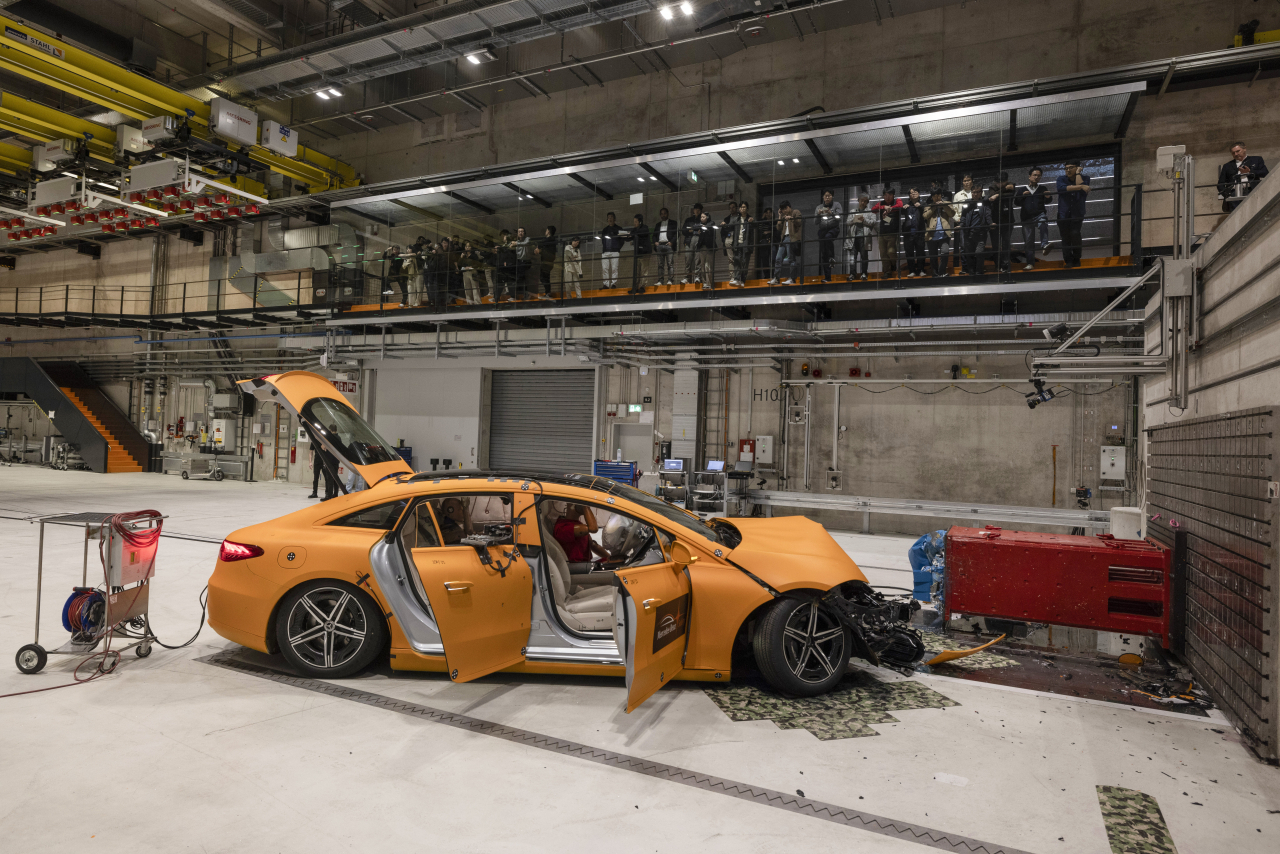 |
A group of Korean reporters watch as a bright orange Mercedes EQS 450 electric sedan slams into a concrete wall at Mercedes-Benz’s Vehicle Safety Technology Center in Sindelfingen, Germany on Oct. 22. (Mercedes-Benz) |
SINDELFINGEN, Germany -- A bright orange Mercedes EQS 450 electric sedan sped down a spotless track, reaching 64 kilometers per hour before slamming into a massive concrete wall. The front end crumpled like a soda can, but a bright ring of 72 lights immediately illuminated the wreck as high-speed cameras captured every millisecond from all angles.
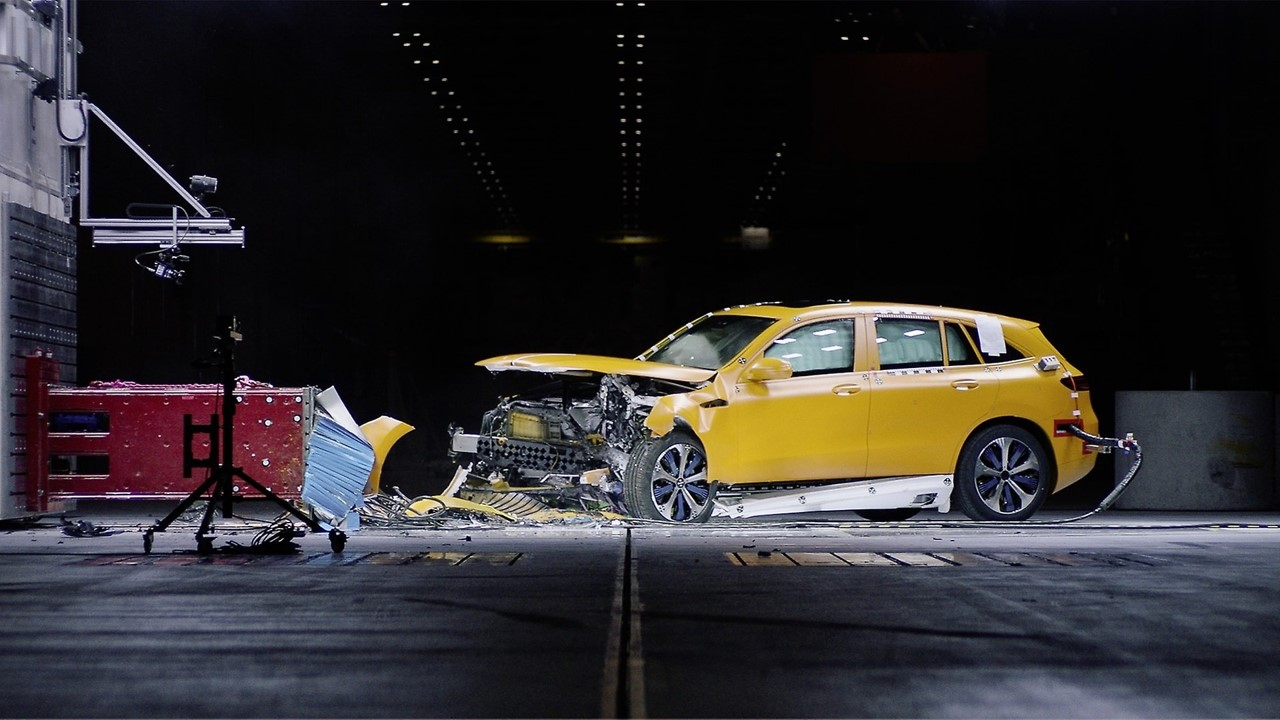 |
An all-electric Mercedes EQC sport utility vehicle is captured mid-crash during another test at Mercedes-Benz’s Sindelfingen crash lab, with its crumpled front end absorbing the impact against a 500-ton barrier. (Mercedes-Benz) |
On Oct. 22, Mercedes let a group of reporters from South Korea witness a full-scale crash test up close at its Vehicle Safety Technology Center in Sindelfingen, Germany. Why? Because earlier this year in August, a Mercedes electric vehicle caught fire in Korea, sparking public fears about battery safety. The incident raised enough concerns that Mercedes invited reporters here to show just how far they go to ensure that their EVs like the EQS are safe.
Europe’s largest crash test facility
The Sindelfingen crash lab, opened in 2016, is the largest of its kind in Europe. Spanning 55,000 square meters -- roughly the size of seven soccer fields -- the facility runs around three crash tests per day, totaling nearly 900 tests annually.
Julia Hinners, a Mercedes-Benz crash safety engineer, led reporters through the test procedure for the EQS. “We set the impact speed to 64 kilometers per hour to mimic a real-world scenario where a driver, traveling faster, suddenly brakes to reduce the impact of an unavoidable collision,” Hinners explained.
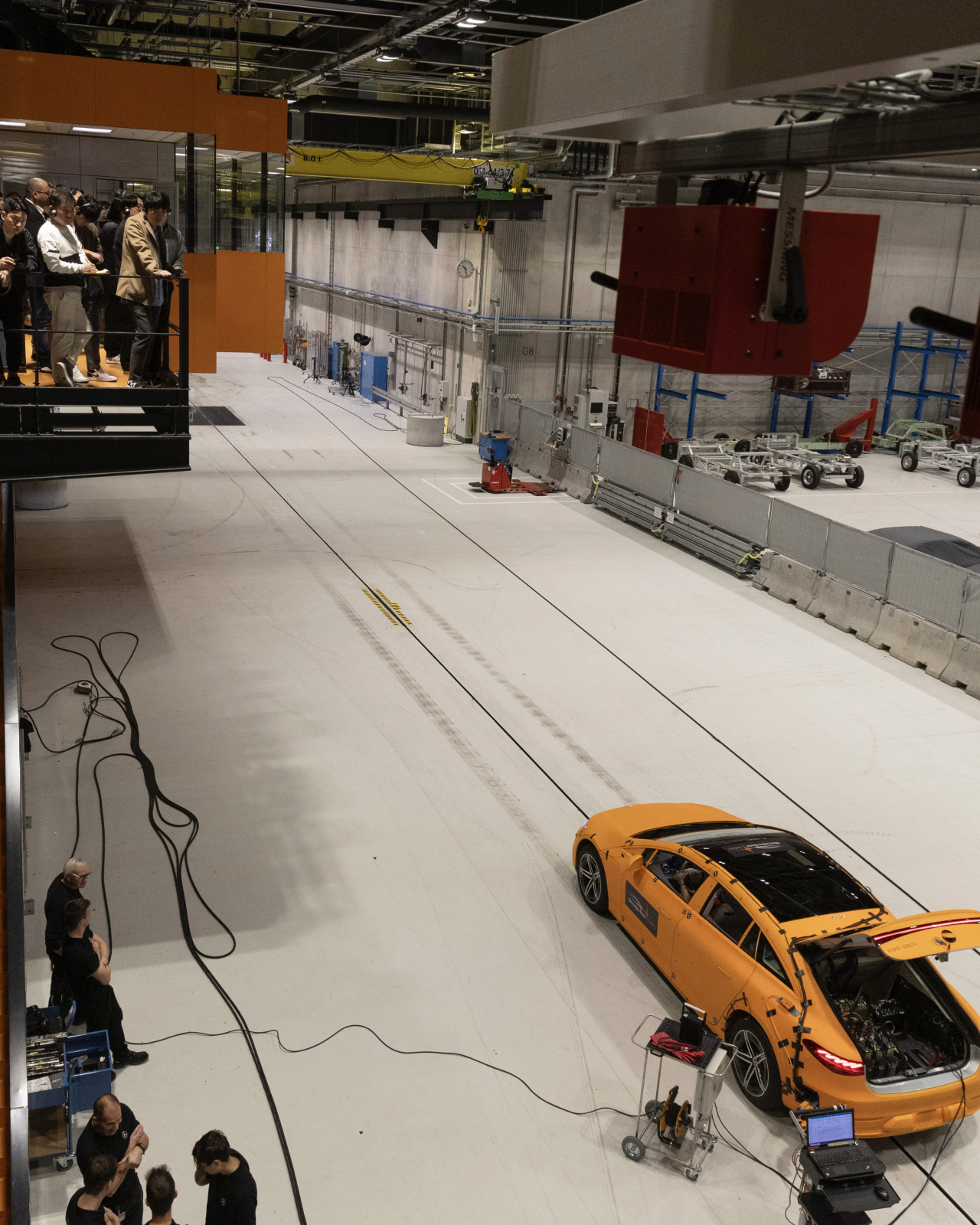 |
The Mercedes EQS is prepped for testing, with a group of reporters observing from a balcony above. (Mercedes-Benz) |
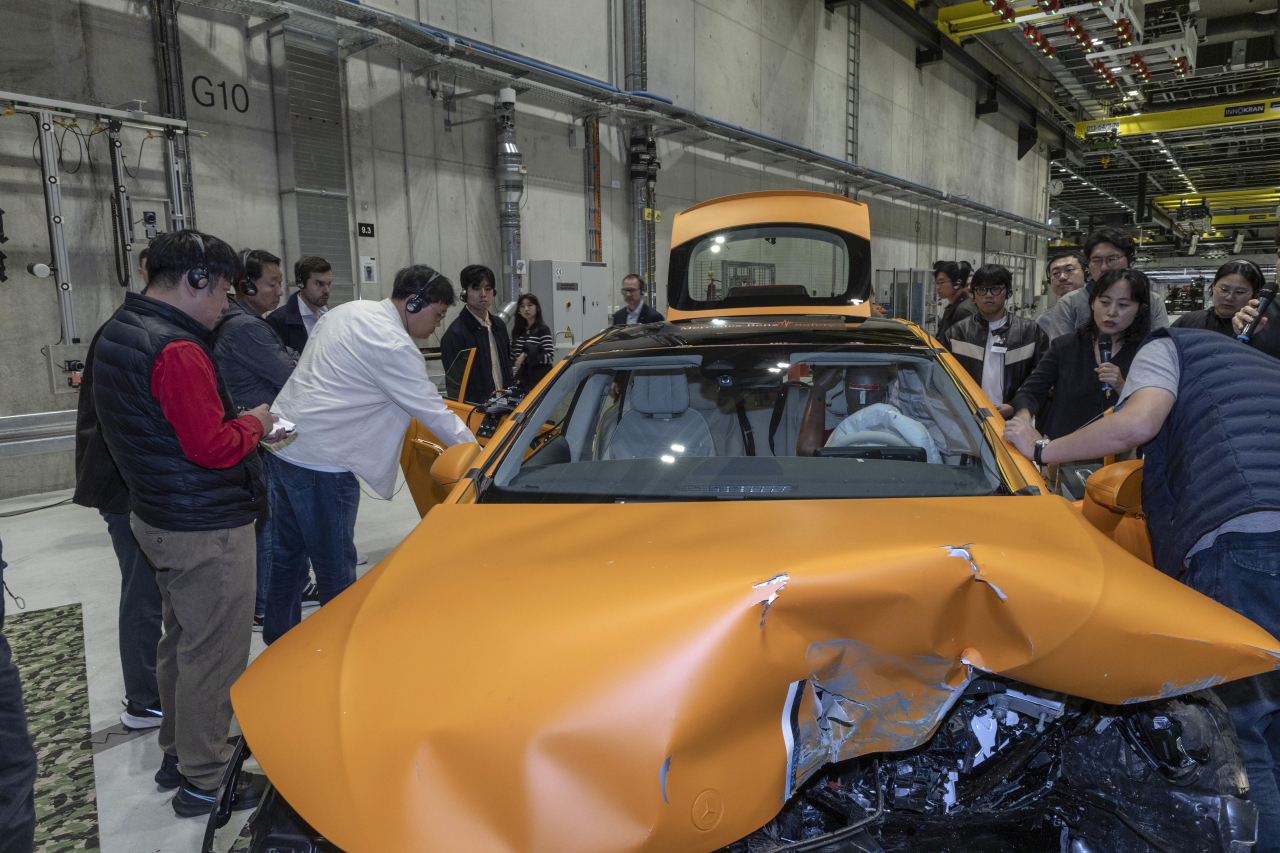 |
Reporters examine the crumpled front end of the Mercedes EQS 450 electric sedan after the crash test. (Mercedes-Benz) |
The EQS’s front end is designed to absorb most of the force, leaving the passenger area intact. After the crash, while the right side of the car’s hood was crumpled, the passenger cabin showed no damage; the windshield was still solid. Even the sedan’s high-tech dashboard displays remained unharmed.
How EV batteries are protected in a crash
Battery safety is one of the most talked-about concerns when it comes to EVs. Traditional cars don’t have massive battery packs under the floor, but EVs do -- and if that battery is damaged in an accident, it can potentially catch fire. To address this, Mercedes has built extra protections into the EQS to keep the battery safe even in severe collisions.
First, the battery pack itself is positioned under the passenger cabin -- the safest part of the car in a crash. The bottom of the vehicle is reinforced with high-strength steel to shield the battery from impacts.
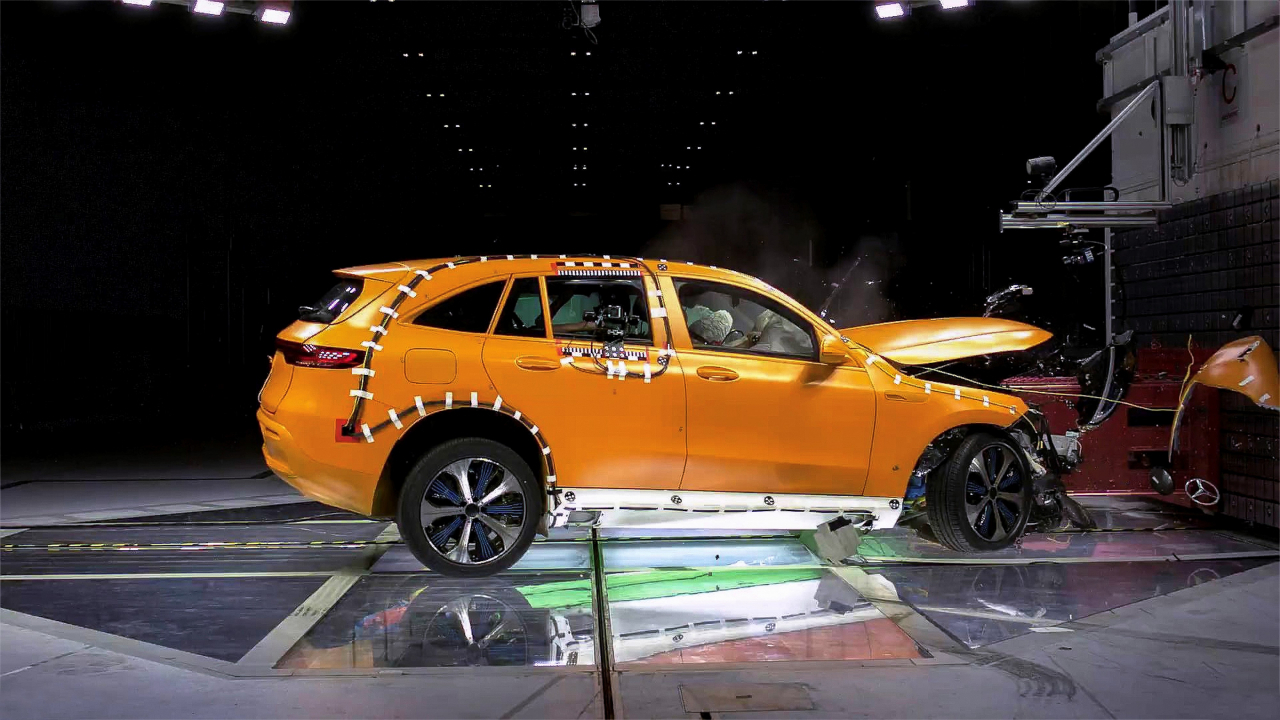 |
High-speed cameras capture every moment to assess a car’s structural integrity and battery safety during crash tests. (Mercedes-Benz) |
And if that’s not enough, there’s also an automatic shut-off system that kicks in milliseconds before a crash. When the car’s sensors detect an abrupt deceleration -- as in, the driver suddenly brakes -- the high-voltage system cuts off instantly, preventing electricity from flowing through the cables, and reducing any risk of short circuits.
Engineers also designed this test so the car stops over a glass floor, allowing them to inspect the underside and check the battery for any signs of damage.
Thousands of tests, no battery fires
According to Marcel Brodbeck, an EV crash test engineer on site, every new Mercedes model goes through 15,000 digital crash simulations and 150 real-world crash tests in Sindelfingen, covering more than 50 unique crash scenarios. So far, Mercedes hasn’t had a single battery fire or explosion during these tests, he says.
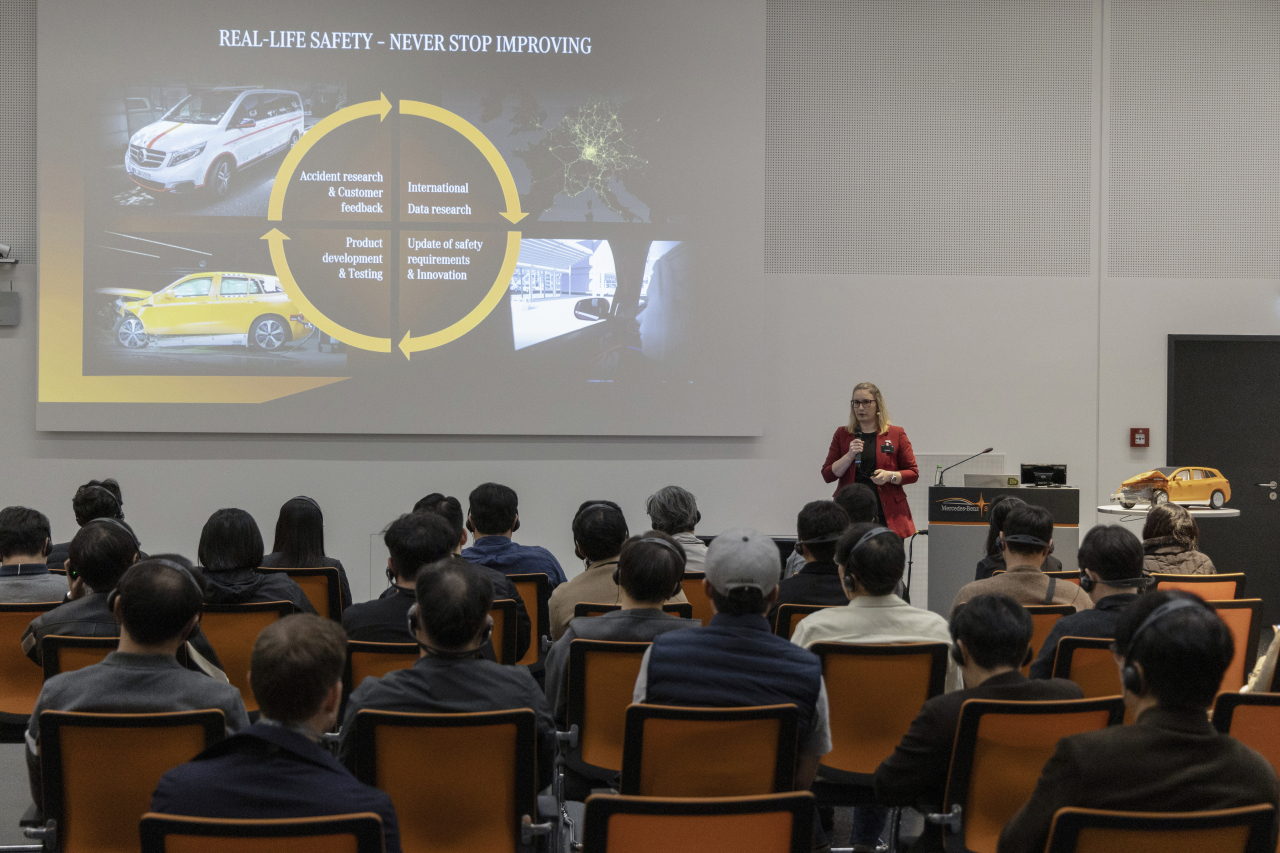 |
Julia Hinners, a passive safety engineer at Mercedes-Benz’s Vehicle Safety Technology Center, presents to Korean reporters on Mercedes’ comprehensive approach to safety testing. (Mercedes-Benz) |
Despite all this testing, Mercedes finds itself facing a challenging PR situation. The fire incident in August is still unsettling since the car had been stationary for 59 hours without any external shock. It has led many Korean consumers to question EV safety, particularly the risk of “spontaneous” fires when a vehicle isn’t even running. Mercedes acknowledges these concerns.
Hinners explained that the company is constantly raising its own internal safety standards. “We follow the legal requirements, consumer safety standards, and our own internal criteria, which are even stricter. When real-world incidents occur, we study them carefully and adjust our standards to make sure our vehicles are as safe as possible.”







